Get the Look of Wood Cabinets for Less
While plastic laminate cabinets might seem like a relic of another era, they actually are a practical, affordable, and — dare we say it? — stylish alternative to conventional wood cabinetry. “The general public doesn’t have an understanding about the durability, flexibility and options that laminate offers,” says Julie Cavanaugh, the owner of Design Matters, an interior design firm in Los Gatos, California.
Cavanaugh estimates that only about 15 percent of her clients request laminate cabinet faces, and a good chunk of those are for rooms other than kitchens. But the material doesn’t deserve to be neglected, she believes. It’s usually a cost-effective option and more environmentally stable and easier to care for than wood.
Wood-patterned laminate can emulate exotic materials and graining without the limitations and scarcity of the real thing. “You can make beautiful lengths of book-matched cabinetry, because the cabinetmaker is in control of the patterning and the repeat,” Cavanaugh says. The price is another incentive: Cavanaugh estimates that laminate cabinets can save homeowners an average of 15 to 30 percent over wood versions.
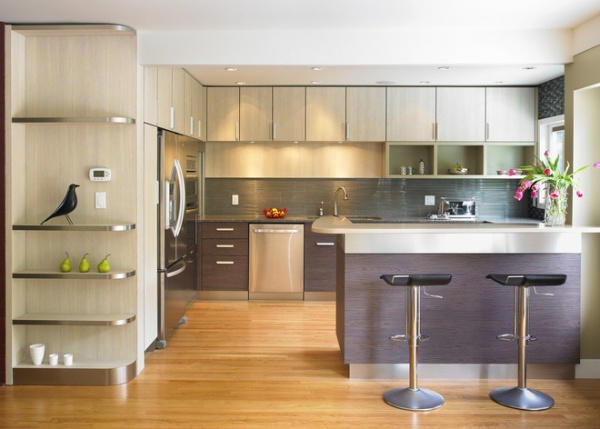
Designer Ines Hanl outfitted this Vancouver kitchen with cabinets faced in a textured-wood laminate. The combination of light and dark finishes not only makes the space feel lighter, but limits the pattern repetition that can cheapen the look of laminate.
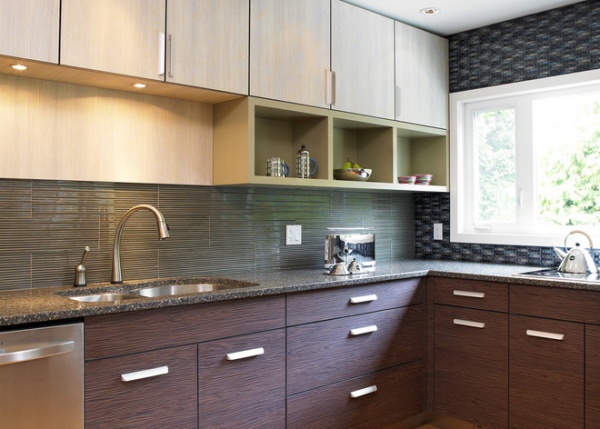
The cabinets in the kitchen Hanl designed were custom made, giving the designer greater leeway in the finishes she used. The tile backsplash echoes the striations in the “wood” below and helps bridge the contrasting finishes at the top and bottom.
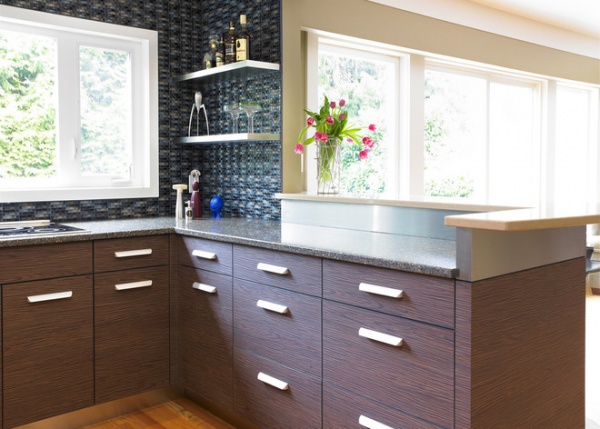
“Statement” cabinet pulls add an upscale touch to the kitchen and help dress up the laminate finish.
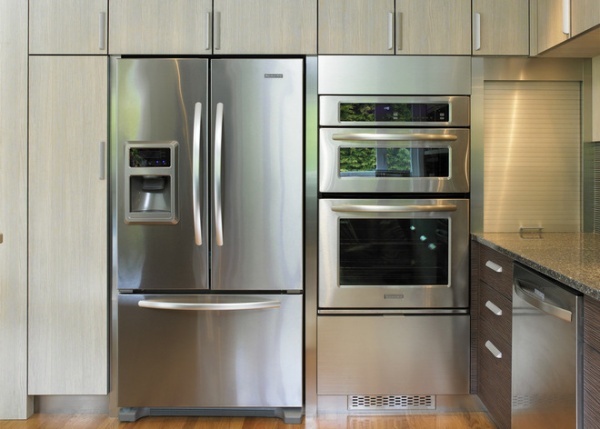
Stainless steel offers a nice contrast to all the faux wood, elevating the elegance of the space while being easy to maintain.
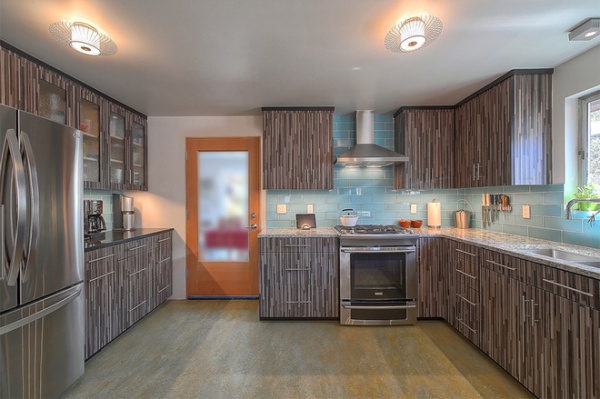
A peninsula once bisected the kitchen of Allison Woods’ and Ken Masel’s 1960s Seattle home, trapping whoever was cooking in one half and rendering the remaining space almost unusable. So the pair ripped out the old cabinets and started from scratch.
“We had never planned on getting laminate,” says Woods. But the cabinetmakers at Cabinetpak persuaded the pair that the material was durable, easy to care for, available in interesting finish options — and wouldn’t look cheap as long as they didn’t choose a cheap laminate.
Contractor: Justin Busch
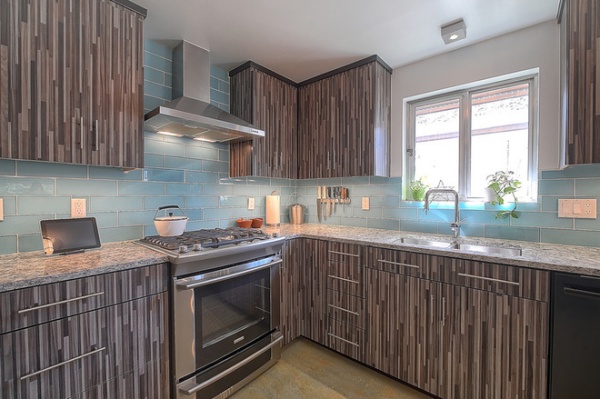
The bold, striated laminate they chose (Modern Edge from Nevamar) gives the newly completed kitchen graphic punch and echoes the short oak floorboards adorning the rest of the house.
“Our vision for the kitchen was to bring a fresh look to the house that was referential to the original architecture,” says Woods, who concedes that her first glimpse of the finished cabinets caused her some alarm. But as the room came together, she grew to appreciate the striated finish. And since she and Masel plan to remain in the house another 20 years, she figures the kitchen will need to be replaced when they sell anyway, so going with something they liked was a reasonable choice.
“It was really nice not having to think about resale too much,” she says.
Range: Electrolux
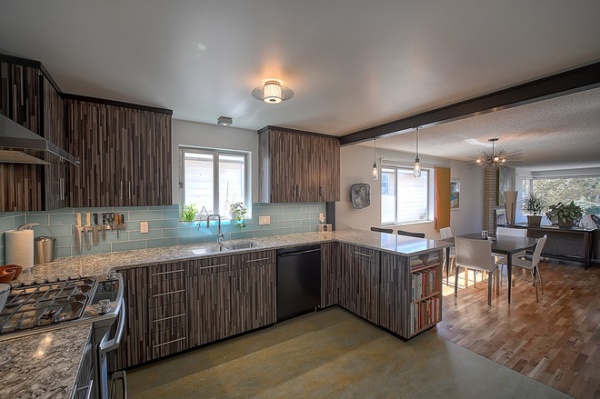
The couple found many of the products on Houzz, including the lighting fixtures, faucet, sink and stove hood. “Houzz was really great in helping me to find the exact right piece at the right price,” says Woods.
She and Masel ended up spending about $41,500 on the kitchen. They hope the project prompts others to express themselves in their homes. “I really want people who are on a moderate budget to be inspired to make bold design choices,” says the homeowner, who clearly practices what she preaches.
Backsplash tile: Loft in turquoise, TileBar; floors: Marmoleum; counters: Bellingham, Cambria
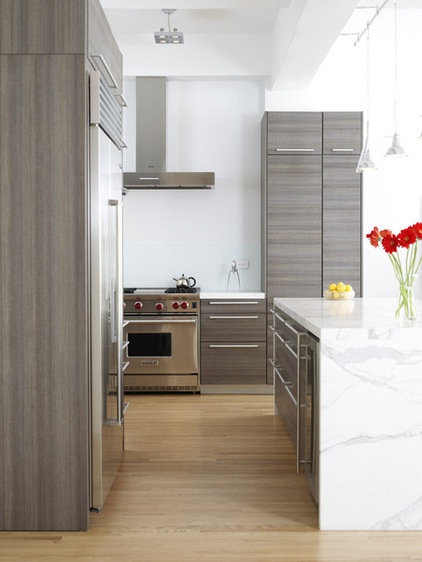
This kitchen, in Manhattan’s Chelsea neighborhood, was designed by Chelsea Atelier Architect utilizing custom cabinets fabricated by Poggenpohl. The textured laminate is Teak Lava, a gray with warm undercurrents and a three-dimensional grain that recalls real wood.
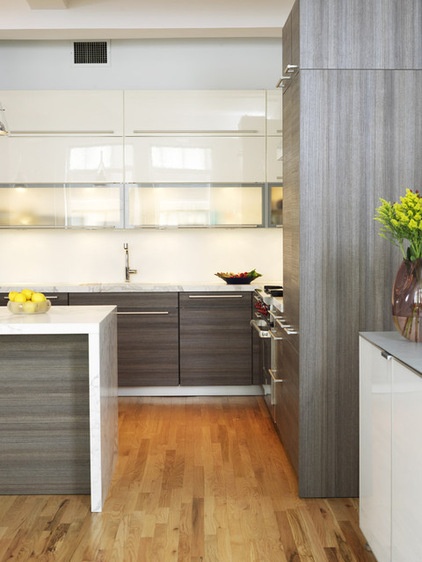
The striations in the laminate lend pattern and character to the space, offering a warm counterpoint to the cool white finishes used elsewhere in the room.
One way to prevent plastic laminate cabinets from looking like a plastic laminate cabinets is by limiting the amount of laminate you use. Here, white marble and warm wood are natural foils to the laminate and make the overall space look richer …
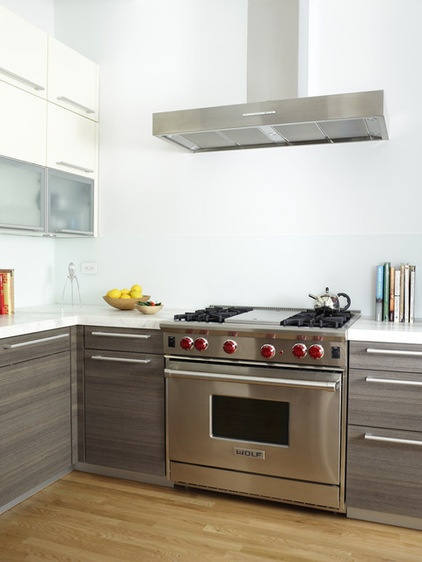
… as do high-end appliances and cabinet pulls. The darker wood finish on the bottom cabinets helps anchor the space, while the white upper units, with their glass doors, almost seem to disappear into the background, making the kitchen feel bigger.
As you can see from all of the examples here, laminate is most effective on slab cabinet fronts; it does not lend itself to ornamental doors or applied molding, which are best left to natural wood. But if you’re willing to put up with that stylistic limitation, the surface options are endless.
More: 3 Steps to Choosing Kitchen Finishes












